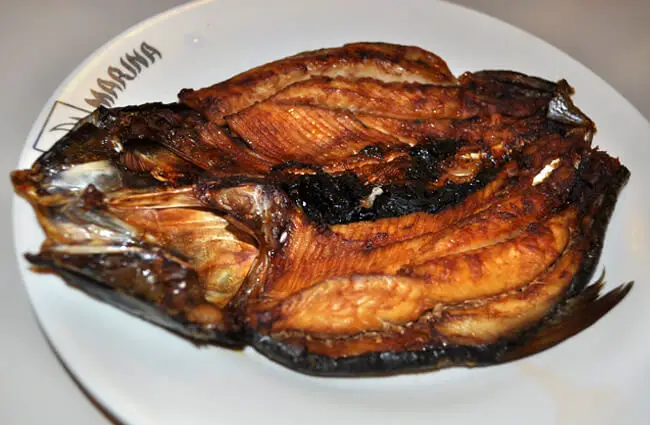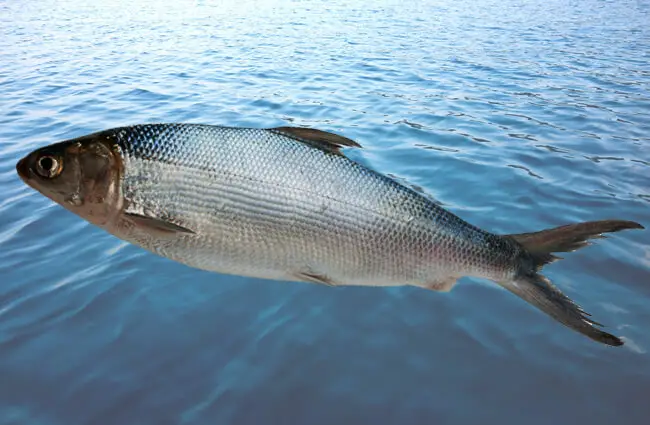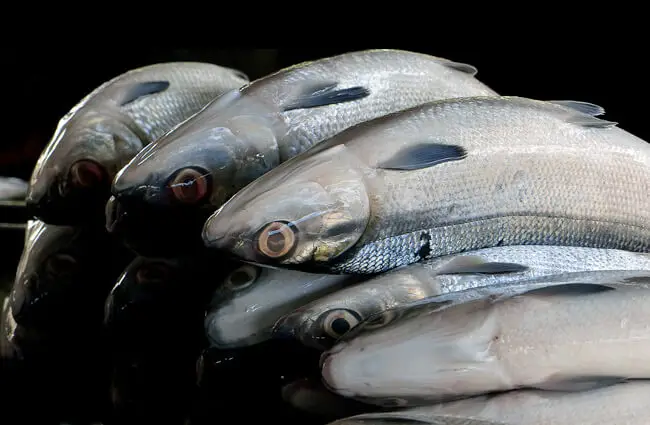The Enigmatic Milkfish: A Journey into the Life of Chanos chanos
Often hailed as the “national fish” of the Philippines, the milkfish, scientifically known as Chanos chanos, is a fascinating creature with a unique biology and a long history intertwined with human cultures. More than just a food source, the milkfish plays a vital role in its ecosystem, showcasing remarkable adaptations and behaviors. This article delves into the world of the milkfish, exploring its natural history, ecological role, and interactions with humans.

A Glimpse into Milkfish Biology
The milkfish is a distinctive fish characterized by its streamlined, silvery body, large scales, and deeply forked caudal fin. Adults typically reach lengths of 30 to 60 centimeters, though some individuals can grow even larger, up to about 80 centimeters. What truly sets the milkfish apart is its feeding mechanism. Unlike most fish, milkfish primarily consume algae, making them largely herbivorous. They possess specialized gill rakers that act as filters, allowing them to efficiently extract microscopic algae from the water column. In addition to algae, they feed on detritus and small invertebrates, especially during juvenile stages. This diet plays a crucial role in maintaining water quality and ecosystem balance.
Habitat and Distribution
Milkfish demonstrate remarkable tolerance to a wide range of salinities, allowing them to thrive in both freshwater and saltwater environments. Their natural distribution extends throughout the Indo-Pacific region, encompassing coastal waters of Southeast Asia, Australia, and parts of the Indian Ocean. They are particularly abundant in the Philippines, Indonesia, and Taiwan. Milkfish prefer calm, shallow waters such as lagoons, estuaries, and mangrove areas, which provide ample algal growth and protection from predators. They can also venture into rivers and streams, especially as juveniles.

Evolutionary History
The milkfish represents a unique lineage within the teleost fish group. Phylogenetic studies suggest that Chanos chanos is the sole surviving species of the Chanidae family, an ancient group with fossil records dating back to the Eocene epoch, more than 50 million years ago. This makes the milkfish a living fossil, offering valuable insights into the evolution of teleost fishes. Its unique anatomical features, such as the absence of a swim bladder and the specialized gill rakers, reflect its adaptation to a specific ecological niche over millions of years.
Life Cycle and Reproduction
Milkfish exhibit a complex life cycle characterized by distinct developmental stages. Spawning typically occurs in coastal estuaries during the warmer months. Females release millions of buoyant eggs, which are fertilized externally by males. The resulting larvae are planktonic, drifting with ocean currents and feeding on microscopic organisms. As they grow, the larvae gradually develop into juveniles, migrating towards coastal habitats such as mangrove forests and estuaries. These juveniles congregate in large schools, feeding on algae and detritus. After a period of growth, the juveniles mature into adults, completing the life cycle.

Mating Rituals and Parental Care
While spawning aggregations are known to occur, detailed observations of milkfish mating rituals remain limited. It is believed that males may display specific behaviors to attract females, such as changes in coloration or fin movements. However, parental care is entirely absent in milkfish. Eggs and larvae are left to fend for themselves, relying on their natural buoyancy and camouflage to evade predators. The high fecundity of milkfish, releasing millions of eggs, compensates for the high mortality rate among eggs and larvae.
Ecological Role and Interactions
Milkfish play a crucial role in maintaining the health of aquatic ecosystems. As herbivores, they help control algal blooms and prevent excessive growth of aquatic vegetation. They also contribute to nutrient cycling by consuming algae and releasing waste products. Furthermore, milkfish serve as a food source for various predators, including larger fish, seabirds, and marine mammals. They are an important link in the food web, transferring energy from primary producers to higher trophic levels.

Interactions with Other Animals
Beyond predator-prey relationships, milkfish interact with other animals in various ways. They often form symbiotic relationships with cleaner fish, which remove parasites from their bodies. They may also congregate around coral reefs, benefiting from the shelter and food provided by the reef ecosystem. Competition for resources can occur with other herbivorous fish, but milkfish generally occupy a different niche due to their specialized feeding mechanism.
Milkfish and Human Culture
Throughout the Indo-Pacific region, milkfish have long been an integral part of human culture and cuisine. In the Philippines, bangus is considered the national fish and features prominently in numerous traditional dishes. The fish is often grilled, fried, or stewed, and it is valued for its delicate flavor and nutritional value. Beyond food, milkfish have also been used in traditional medicine and as a symbol of prosperity and good fortune.

Aquaculture and Sustainability
In recent decades, milkfish aquaculture has become increasingly important, providing a sustainable source of fish protein and supporting local economies. Milkfish are relatively easy to raise in ponds and cages, and they can be grown to marketable size within a few months. However, it is crucial to manage aquaculture operations responsibly to minimize environmental impacts, such as pollution and habitat destruction. Sustainable aquaculture practices can help ensure the long term health of milkfish populations and the ecosystems they inhabit.
Encountering Milkfish in the Wild and Responsible Interaction
If you encounter milkfish in the wild, observe them from a respectful distance. Avoid disturbing their habitat or feeding them, as this can alter their natural behaviors. If you are snorkeling or diving, be mindful of your fins and avoid touching the fish or damaging the surrounding coral reefs. Support local conservation efforts aimed at protecting milkfish populations and their habitats.
Caring for Milkfish in Captivity
For zookeepers or aquarium enthusiasts, providing appropriate care for milkfish requires a spacious tank with ample swimming room. Maintaining high water quality is essential, as milkfish are sensitive to pollutants. A varied diet consisting of algae, seaweed, and plant matter should be provided. Regular monitoring of health and behavior is crucial to detect any signs of illness or stress. Avoid overcrowding the tank, as this can lead to disease outbreaks.
The milkfish, Chanos chanos, is a remarkable species that embodies resilience, adaptation, and ecological importance. Its unique biology, cultural significance, and economic value make it a captivating subject for scientists, conservationists, and anyone interested in the wonders of the natural world. By understanding and appreciating this remarkable fish, we can contribute to its conservation and ensure its continued survival for generations to come.

![Red Angus Closeup of a beautiful Red Angus cowPhoto by: U.S. Department of Agriculture [pubic domain]https://creativecommons.org/licenses/by/2.0/](https://animals.net/wp-content/uploads/2020/03/Red-Angus-4-238x178.jpg)




![Red Angus Closeup of a beautiful Red Angus cowPhoto by: U.S. Department of Agriculture [pubic domain]https://creativecommons.org/licenses/by/2.0/](https://animals.net/wp-content/uploads/2020/03/Red-Angus-4-100x75.jpg)

